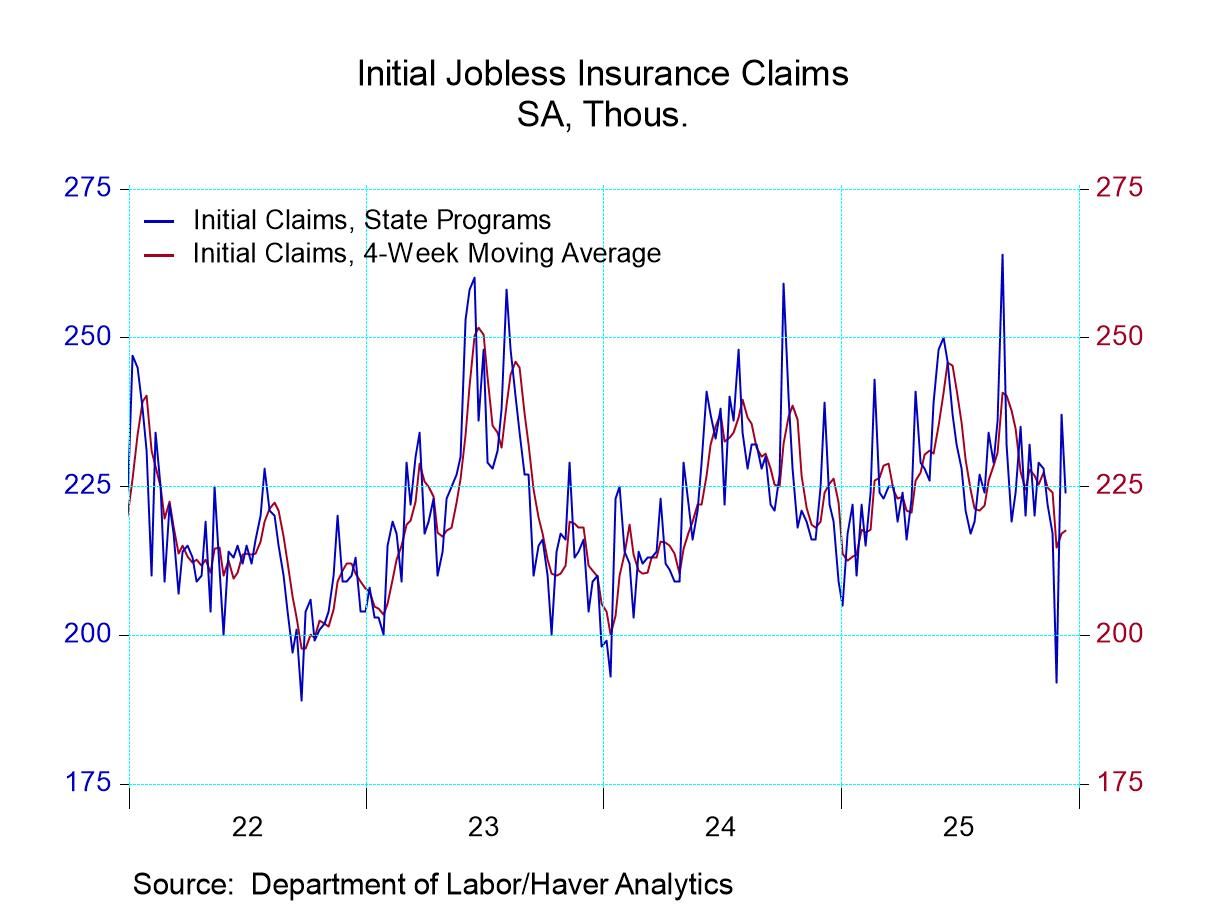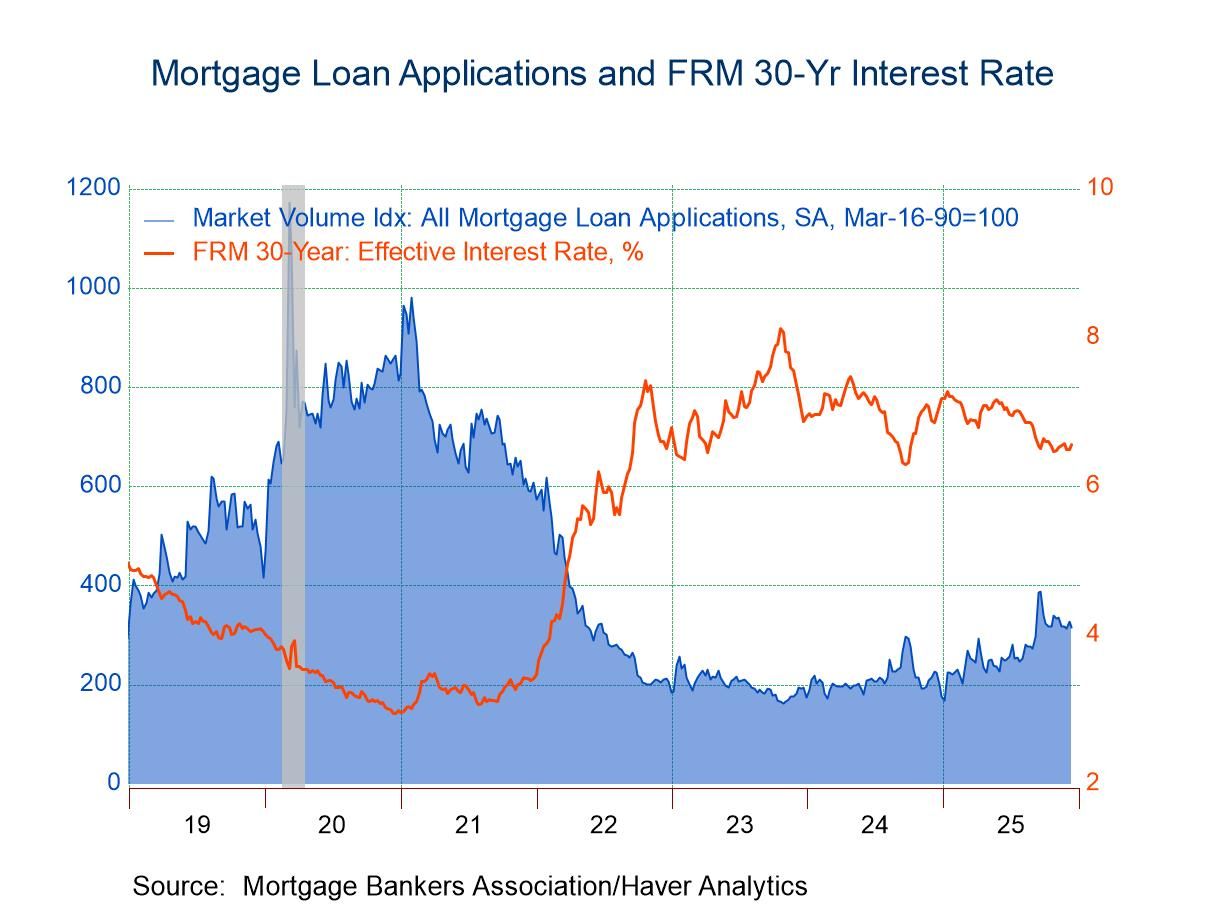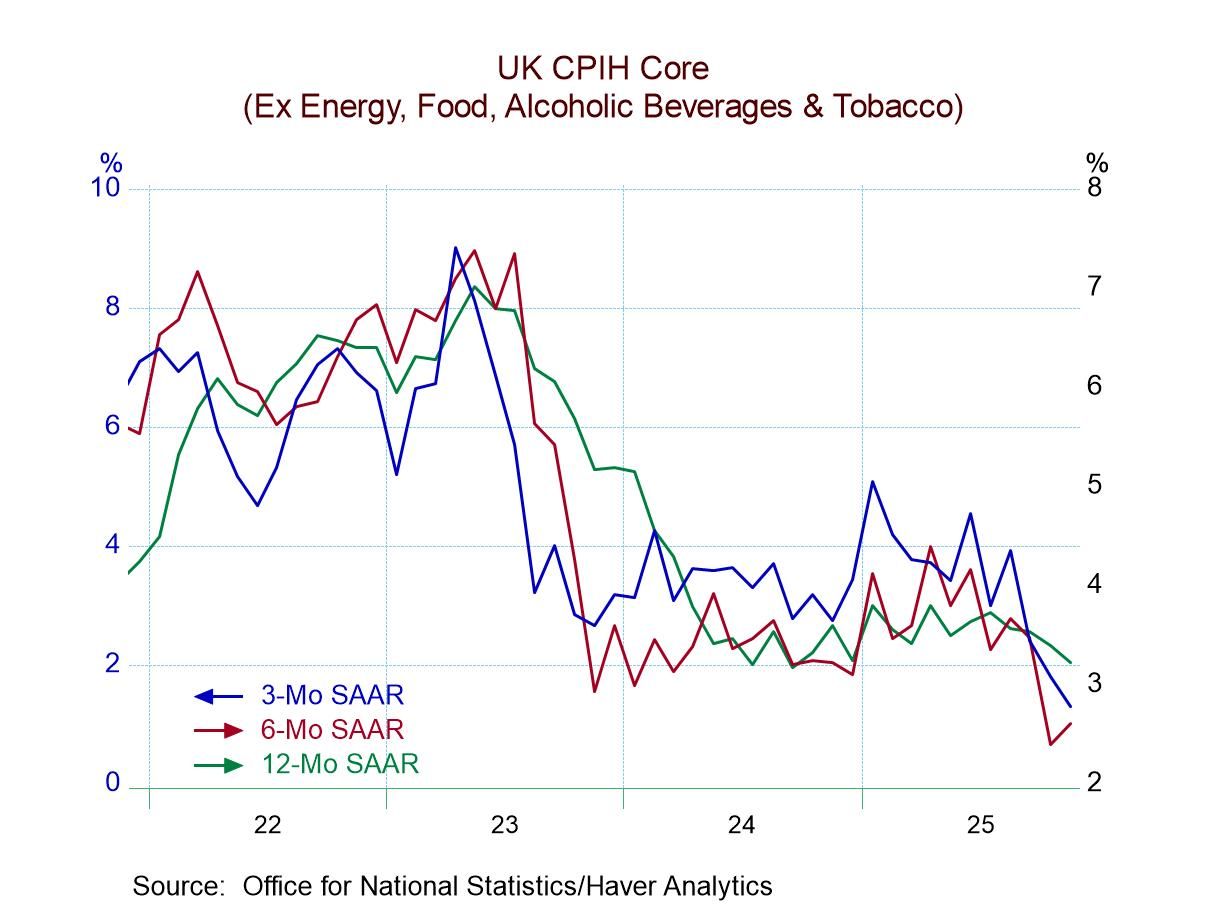U.S. ISM Manufacturing PMI Eases in October; Price Index Declines Sharply
by:Tom Moeller
|in:Economy in Brief
Summary
- Decline reverses all of September increase.
- Lower production offsets new orders rise.
- Price index falls to nine-month low.
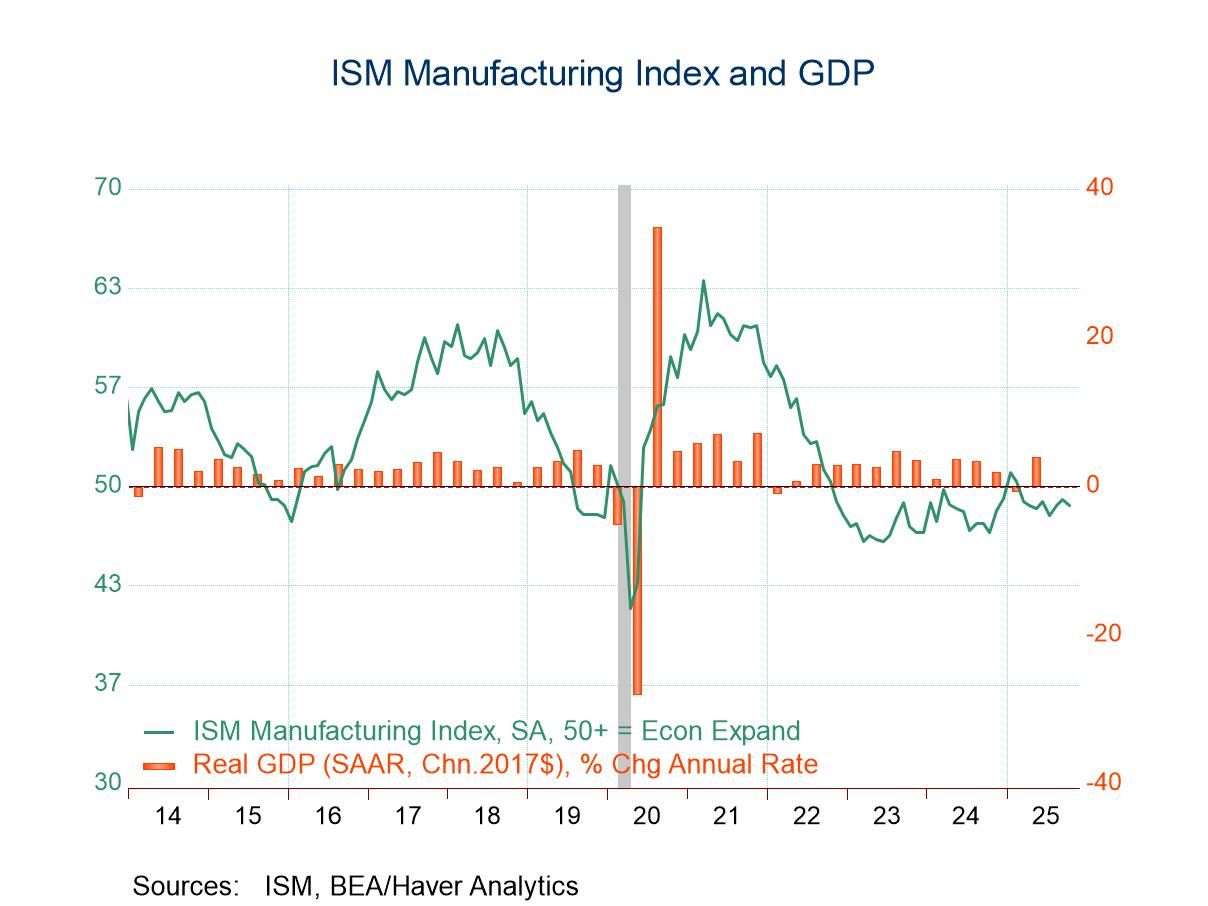

Factory sector activity remains under pressure. The ISM U.S. manufacturing PMI declined to 48.7 in October after rising to 49.1 during September from 48.7 in August, according to the Institute for Supply Management. These figures are below the 50 expansion-contraction dividing line. As a result, they continue to indicate that the U.S. manufacturing sector weakened for the eighth consecutive month. The reading remained remain above, however, a low of 46.9 in October of last year. A November index of 49.4 had been expected in the Action Economics Forecast Survey.
The production component declined to 48.2 last month after rising to 51.0 in September. It remained increased from an April low of 44.0. A lessened 27.3% (NSA) of respondents reported higher production while an increased 22.0% reported lower output levels. The inventory reading fell to a 12-month low of 45.8 from 47.7 in September. A lessened 13.2% (NSA) of respondents raised inventories while a higher 21.7% shed them.
Working higher, the new orders index rose to 49.4 during October from 48.9 in September. An increased 20.4% (NSA) of respondents reported new orders improvement while 26.0% reported a decline. The employment index increased to a five-month high of 46.0 last month after rising to 45.3 in September. An increased 13.1% (NSA) of respondents more hiring while 22.3% reported less. The supplier delivery index rose to 54.2 in October from 52.6 in September. Twelve percent (NSA) of respondents reported slower product delivery speeds while 3.2% reported a quickening.
The prices index weakened to 58.0 (NSA) during October from 61.9 in September. It was below a high of 69.8 in April, and well above its low of 39.4 in December 2022. A lessened 27.3% of respondents reported higher prices, a nine month low, while an increased 8.7% reported lower.
In other series, the export orders index rose to a seasonally adjusted 44.5 in October after falling sharply to 43.0 in September. It remained up from 40.1 May low. The imports index edged up to 45.2 last month from 44.7 in September. The index is below a high of 52.6 in February.
The ISM figures are based on responses from over 400 purchasing and supply executives from 18 industries, which are weighted according to each industry’s contribution to GDP. These data are diffusion indexes where a reading above 50 indicates expansion; below 50 indicates contraction. The ISM Manufacturing PMI is a composite index based on the diffusion indexes of five of the indexes (seasonally adjusted) with equal weights: New Orders, Production, Employment, Supplier Deliveries, and Inventories. The figures from the Institute for Supply Management can be found in Haver’s USECON database; further detail is found in the SURVEYS database. The expectations number is available in Haver’s AS1REPNA database.
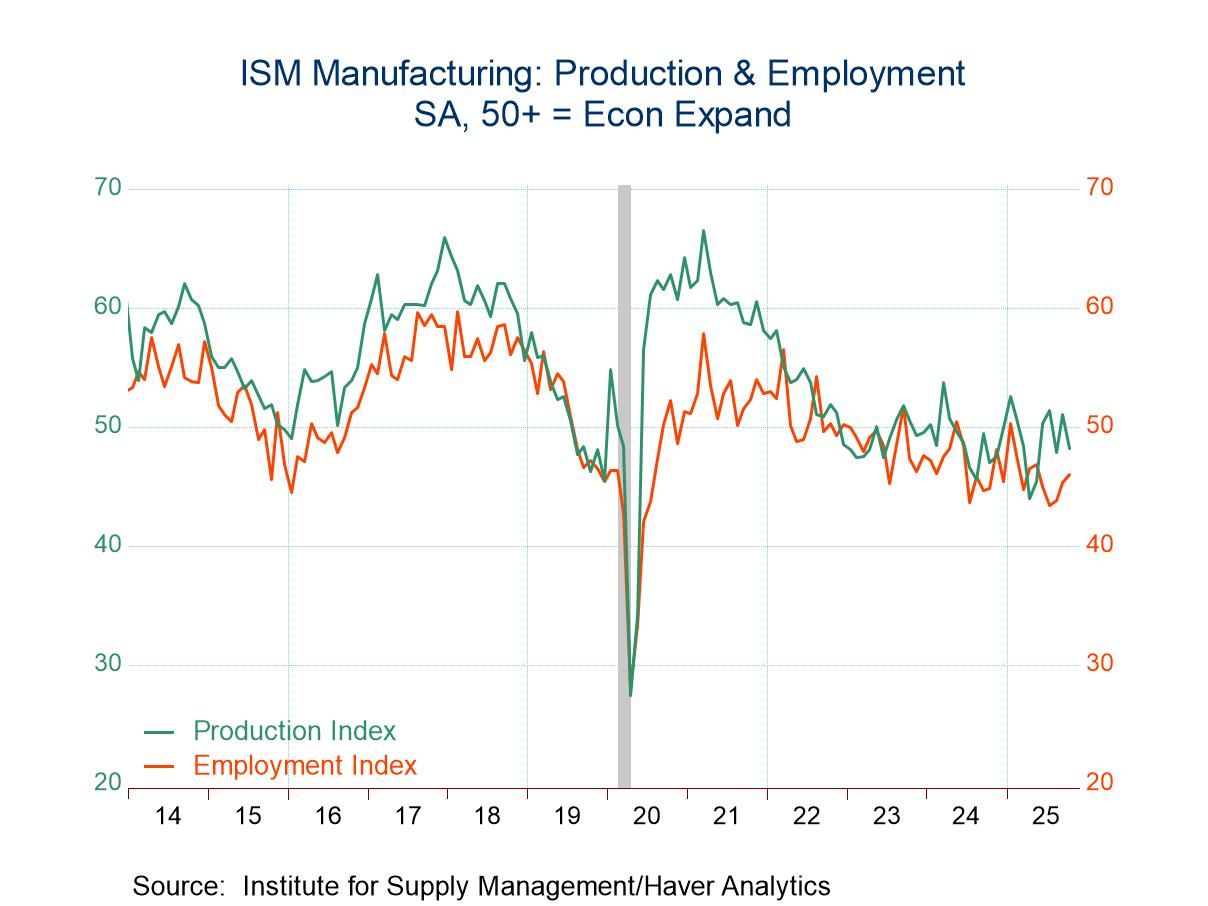
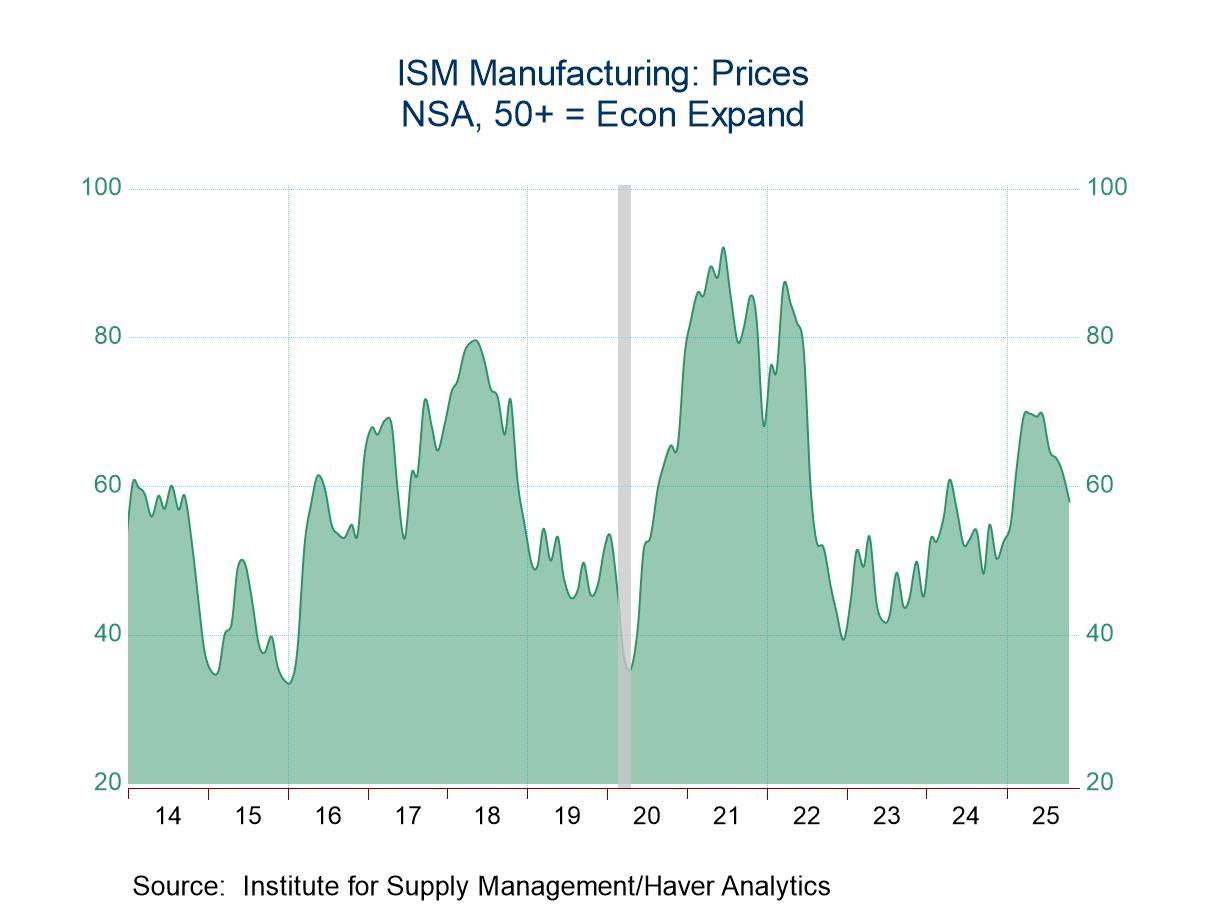
Tom Moeller
AuthorMore in Author Profile »Prior to joining Haver Analytics in 2000, Mr. Moeller worked as the Economist at Chancellor Capital Management from 1985 to 1999. There, he developed comprehensive economic forecasts and interpreted economic data for equity and fixed income portfolio managers. Also at Chancellor, Mr. Moeller worked as an equity analyst and was responsible for researching and rating companies in the economically sensitive automobile and housing industries for investment in Chancellor’s equity portfolio. Prior to joining Chancellor, Mr. Moeller was an Economist at Citibank from 1979 to 1984. He also analyzed pricing behavior in the metals industry for the Council on Wage and Price Stability in Washington, D.C. In 1999, Mr. Moeller received the award for most accurate forecast from the Forecasters' Club of New York. From 1990 to 1992 he was President of the New York Association for Business Economists. Mr. Moeller earned an M.B.A. in Finance from Fordham University, where he graduated in 1987. He holds a Bachelor of Arts in Economics from George Washington University.


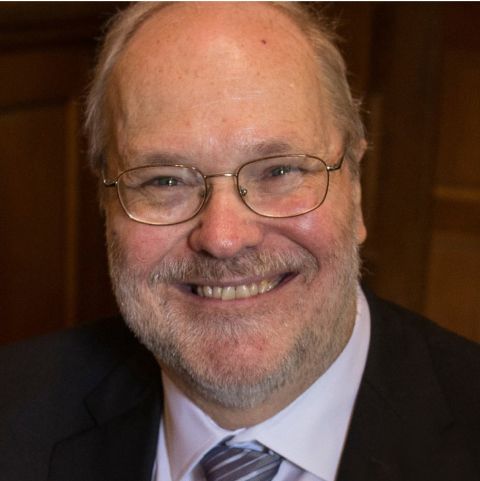
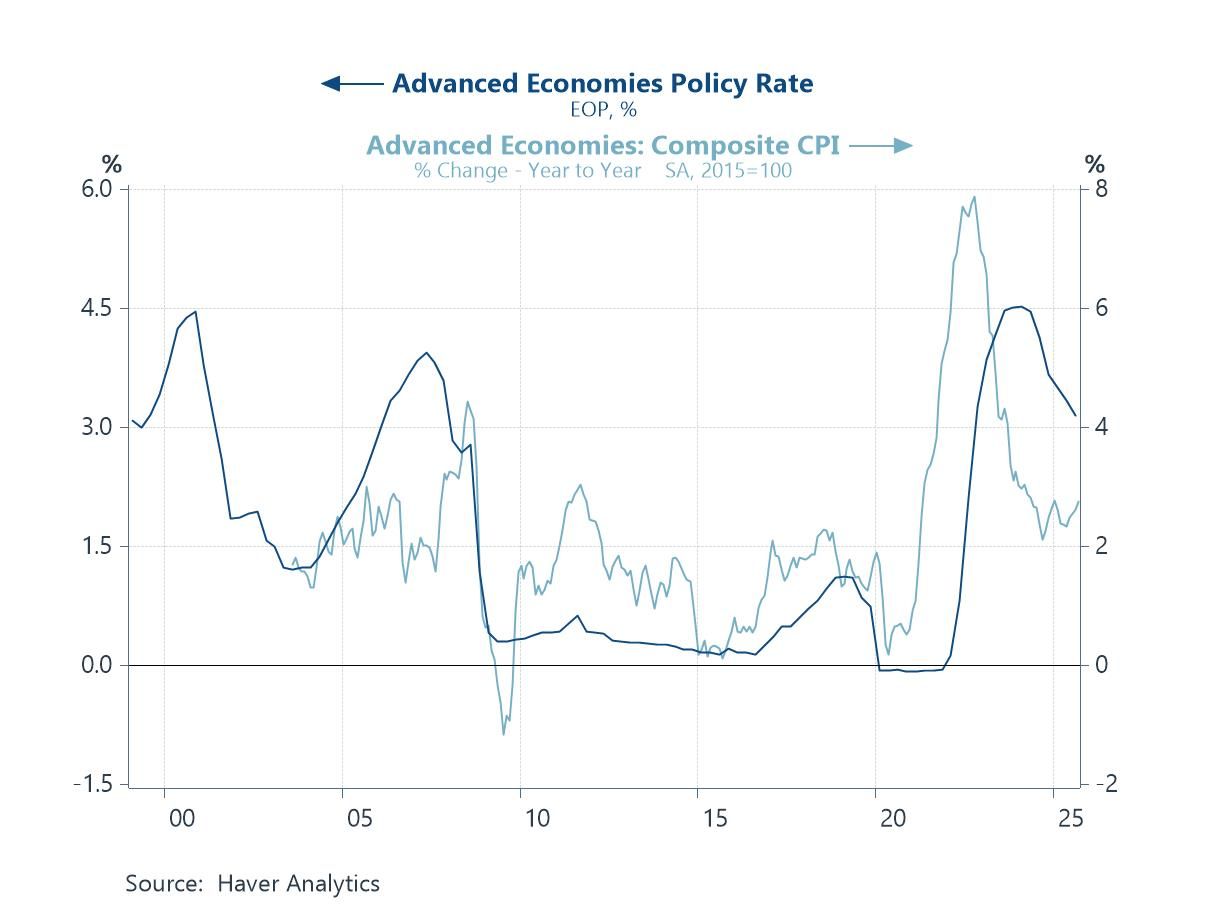
 Global
Global